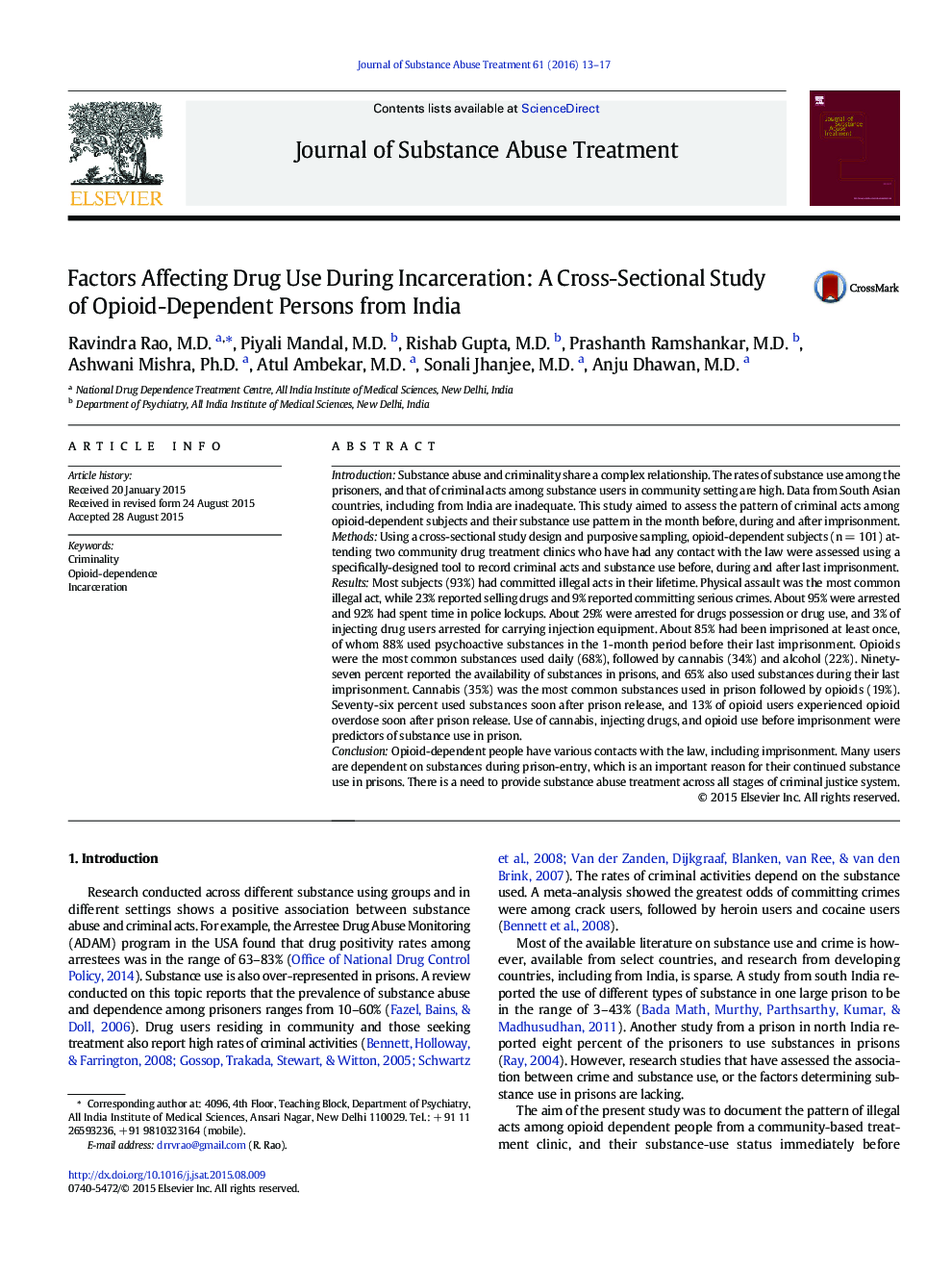| کد مقاله | کد نشریه | سال انتشار | مقاله انگلیسی | نسخه تمام متن |
|---|---|---|---|---|
| 329589 | 543558 | 2016 | 5 صفحه PDF | دانلود رایگان |
• The study was conducted among opioid-dependent users availing community-based opioid substitution therapy in an urban setting in India who had any contact with law.
• Majority of the participants were involved in illegal activities and were incarcerated ever in their lifetime.
• Almost all incarcerated subjects reported availability of drugs in prison; incarceration neither deterred drug users from using drugs, nor did it motivate them to quit drugs in prison or post-release from prisons.
• There was limited availability of drug treatment across all interface of criminal justice system – from police lock-ups to prisons, though majority subjects felt the need for drug treatment.
• Overdose immediately post-release from prisons is problematic, and necessary measures need to be adopted in prisons itself.
• Lifetime use of cannabis and injecting drugs, as well as opioid use in the month before imprisonment were predictors of drug use in prisons.
IntroductionSubstance abuse and criminality share a complex relationship. The rates of substance use among the prisoners, and that of criminal acts among substance users in community setting are high. Data from South Asian countries, including from India are inadequate. This study aimed to assess the pattern of criminal acts among opioid-dependent subjects and their substance use pattern in the month before, during and after imprisonment.MethodsUsing a cross-sectional study design and purposive sampling, opioid-dependent subjects (n = 101) attending two community drug treatment clinics who have had any contact with the law were assessed using a specifically-designed tool to record criminal acts and substance use before, during and after last imprisonment.ResultsMost subjects (93%) had committed illegal acts in their lifetime. Physical assault was the most common illegal act, while 23% reported selling drugs and 9% reported committing serious crimes. About 95% were arrested and 92% had spent time in police lockups. About 29% were arrested for drugs possession or drug use, and 3% of injecting drug users arrested for carrying injection equipment. About 85% had been imprisoned at least once, of whom 88% used psychoactive substances in the 1-month period before their last imprisonment. Opioids were the most common substances used daily (68%), followed by cannabis (34%) and alcohol (22%). Ninety-seven percent reported the availability of substances in prisons, and 65% also used substances during their last imprisonment. Cannabis (35%) was the most common substances used in prison followed by opioids (19%). Seventy-six percent used substances soon after prison release, and 13% of opioid users experienced opioid overdose soon after prison release. Use of cannabis, injecting drugs, and opioid use before imprisonment were predictors of substance use in prison.ConclusionOpioid-dependent people have various contacts with the law, including imprisonment. Many users are dependent on substances during prison-entry, which is an important reason for their continued substance use in prisons. There is a need to provide substance abuse treatment across all stages of criminal justice system.
Journal: Journal of Substance Abuse Treatment - Volume 61, February 2016, Pages 13–17
